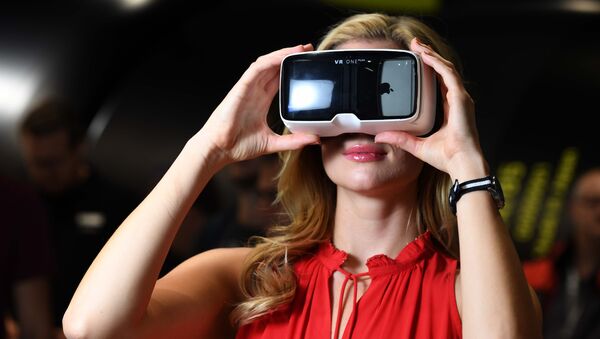Steve Mann is a radio engineer and wearable computing pioneer, who built his first augmented reality device long before the digital era. The gadget was capable of visualizing electric and other waveforms by creating graphic representations. Here’s Steve describing his invention in a keynote video for the AR-in-Action conference.
“It has terminals that I can use to pick up different signals. It allowed me to pick up television signals and radio waves and sound waves and so on, and to display them as an augmented reality overlays. So I waved this light stick back and forth and these lights are connected to here, there are 35 lights in five groups of seven, connected by 12 wires. It allowed me to create augmented realities and present this to audiences of hundreds of people who could see this all at the same time without any special glasses or any other special apparatus.”
Steve’s ideas evolved over time. His wearable computers became lighter and more portable. In the 1980’s he had to carry a backpack full of equipment and wear a big helmet, which probably looked more like Doc Brown’s crazy gadgets from Back to the Future than something useful. But now Mann’s equipment is sleek, efficient and lightweight – very similar to what other developers have shown in devices like Google Glass, but with extended brainwave sensing capabilities.
Currently, there are many augmented reality and augmented virtual reality products on the market. In 2016, Microsoft started selling its Hololens mixed reality glasses. Later that year, the software giant announced the global expansion of the project, which was previously only targeting the US and other markets, such as Australia, Ireland, New Zealand, France and the UK.
HoloLens and Kinect creator Alex Kipman says that thanks to these new gadgets, people are already able to enhance their perception of life. Here is Kipman talking about HoloLens applications in his 2016 TED talk.
“I’m not thinking about a distance future, I’m talking about today. We are already seeing car companies like Volvo designing cars differently with Hololens, universities like Case Western redefining the way medical students learn, and my personal favorite – NASA is using HoloLens to let scientists explore planets holographically.”
Google went in a different direction when it came to AR, with Tango technology, which uses smartphones and tablets rather than special glasses, to add an extra visual layer to everyday reality. Facebook is also placing big bets on AR. Mark Zuckerberg’s company spent a lot of time recently on developing special camera apps, so it’s likely that in the coming years we’ll see more augmented reality features in the world’s largest social media network.
We'd love to get your feedback at radio@sputniknews.com
Have you heard the news? Sign up to our Telegram channel and we'll keep you up to speed!


